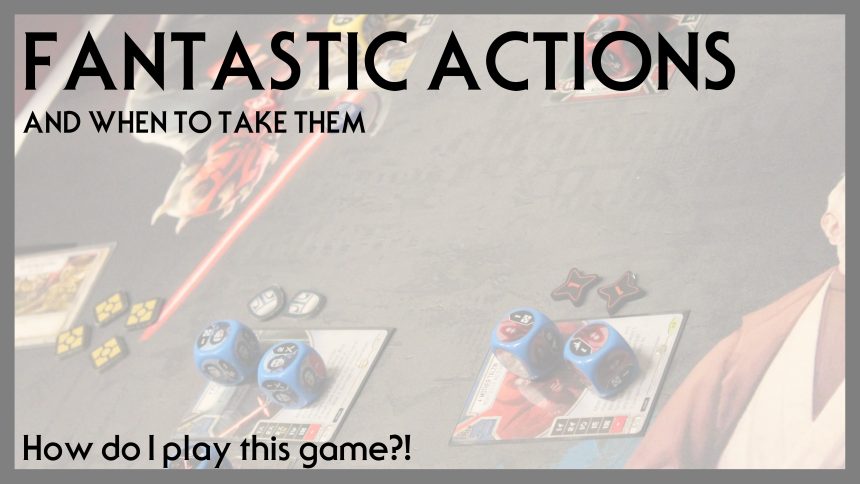How do I play this game?!
So you’ve done it. You’ve taken the plunge, purchased a starter set, and are ready to play Star Wars: Destiny. You sit down with a friend, lay out your chosen characters, decide on an epic battlefield, and then… you stop. You look at your friend, and both of you share a comical shrug. How does this game work, exactly?
The first thing I would recommend for a new player would be to explore the work of as many content creators as you can. There are several excellent videos on YouTube and other sites that will walk you through the basics. I would also like to shout out The Chance Cube’s own Cecil Miller, who recently published an article on deck-building for new players. This article will provide a brief explanation of the actions that you can take in a turn. I hope it is somewhat helpful to both new and veteran players!
Lights… Camera… Actions!
In Star Wars: Destiny, you and your opponent play the game by taking alternating turns in what is called a round. Each round begins when the player who has control of the battlefield takes an action. Actions are the core of Destiny game play. Players take actions against one another until one player has lost the game, and there are many different actions you can take in a turn. I will list each of them in this article with some advice and anecdotes to help make your Destiny experience as enjoyable as possible. The subheadings of this article are the actions you can take in a round. The descriptions below them should help you feel more comfortable taking them!
Action 1: Play a Card From Your Hand
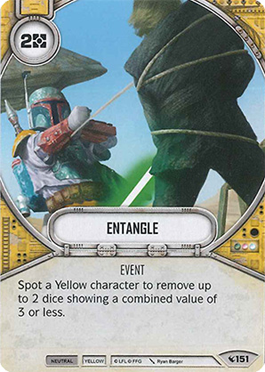
There are several different card types in Destiny, but one thing that they have in common is that most of them will enter play directly via you playing them from your hand. Events, Supports, Upgrades, and Downgrades all enter play in this manner. If you do not have the resources to play a card in your hand, you cannot attempt to take this action. Pay close attention to cards you elect to play from your hand; if they have a “spot” requirement, you can play the card, but you cannot not use its effects unless you have the “spot” on your side of the field. In many ways Destiny is a game of keywords, and recognizing them is one way to quickly improve your play.
Playing a card from your hand is an action that you can expect to take frequently. The best cards are often those that give players a tempo advantage. Be selective about the cards you play in your deck. Remember that it will take you an action to play them each individually. If you are playing an aggressive deck, it is helpful to play cards that speed up your game plan (something like Seize the Day (CV130)). Decks that want to ramp up their characters by playing upgrades or supports may see additional value in low cost events.
Playing a card from hand is a simple action, but always consider the cost of a card you want to play and the possible benefits you will get from playing it. Sometimes, even when we have a good card in hand to play, the right thing to do is to take a more “aggressive” action like activating a character to get ahead.
Action 2: Activate a Character or Support
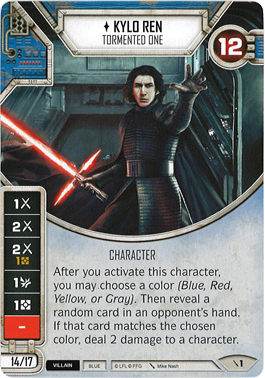
We have to “activate” cards (whether they be a character or a support) in order to actually roll our dice into the “pool.” When activating a character, we must first exhaust that character (turn them sideways, kinda like tapping them). Activating your characters before your opponent does is a strong way to potentially end the round with control of the battlefield, since you’ll be “an action ahead” to start the round. Some characters, like Kylo Ren (TP1), have abilities that proc (take place) immediately after activation.
Getting dice into the pool is how we advance a turn and really start to feel like we’re playing Destiny. In many ways, Destiny is a very unique card game; the closest analogue to the dice I can think of in other TCGs is creatures in Magic. I know that isn’t a great comparison, but in my defense the dice mechanic is pretty distinctive. It is your dice that deal damage to an opponent, and it is your dice that can be interacted with or removed from the board by your opponent. Dice are inherently less consistent than creatures are. They are also generally harder to permanently remove. Building your deck around consistent characters (with similar sides) that can smooth out the inherent randomness of dice is crucial.
Action 3: Resolve Your Dice
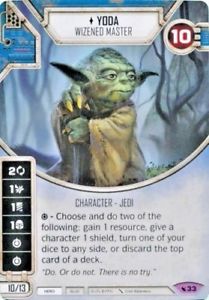
The most important thing you can do with your dice (once they are in the pool) is resolve them. You may resolve any number of dice in your pool that share the same symbol by taking this action. This is true even if the dice did not share the symbol at the start of the action. For example, imagine that you are playing Yoda (LG33). An action that you could take would be to declare that you would like to resolve dice showing specials. You are allowed to use Yoda’s special to turn another of his dice to a side showing a special. If you do this, you may now resolve that second die in the same action.
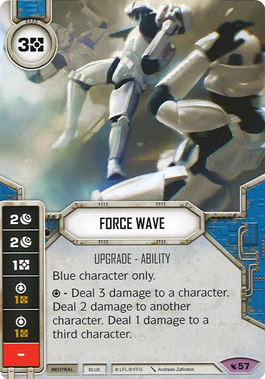
Dice with modified sides (they’re blue and have a “+” before the number) must be resolved with other dice showing the same symbol. If a die has the yellow resource symbol showing on the bottom of one of its sides, you must pay that many resources to resolve that die side. So, for example, if you have a Yoda with Force Wave (LG57) attached, you many use Yoda’s special to turn Force Wave to a special, then pay one resource to resolve that special in the same action.
We’re in Here Talking About Damage!?
When you are resolving dice that show damage, take care to understand the difference in damage types. Melee and Ranged damage dice must be resolved against one character. You can’t use a two-Melee side to deal one damage to two different characters. Indirect damage is assigned as your opponent chooses. Characters are defeated when they are damaged equal to their health. Defeated characters have all of their dice removed from the pool. Upgrades are discarded from defeated characters and sent to the discard pile. The defeated character is removed from the game. Characters are never discarded, which means that characters cannot enter the discard pile.
Action 4: Discard a Card to Re-roll Your Dice
This is an action that can drive players crazy. When you find yourself in a position where you cannot resolve the dice you have in the pool (either because they’re unhelpful or because they’re blank), it may be time to take the discard to re-roll action. The odds of hitting one side you want on a die are roughly 17%. If you re-roll two dice, hoping to hit the same side on both, the odds drop to a meager 3%. You can improve these odds significantly by playing characters with good dice (dice that have many desirable sides), because for each good side on a die your odds go up substantially to hit something you want.
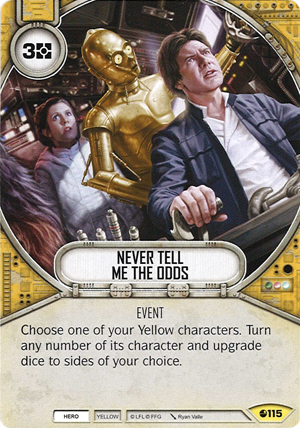
Rolling dice is not something mystical and unbound from the laws of probability. If you play smart, and research the numbers, you can maximize the efficacy of your re-rolls. Doing this will tone down a lot of the potential negative player experiences in Destiny. I’m not saying that you need to go out and get a Blaise Pascal costume, but having a basic understanding of how likely certain outcomes are to occur will elevate your game enormously.
One more thing – you can actually discard to re-roll zero dice. If you need a filler action for some reason, and don’t want to pass, this is a choice you could make. There are some other odd situations where taking this action with no dice in the pool is correct. Card advantage isn’t as impactful in Destiny as it is in some games, but tread lightly with this option.
Action 5: Use a Card Action (Or Power Action)
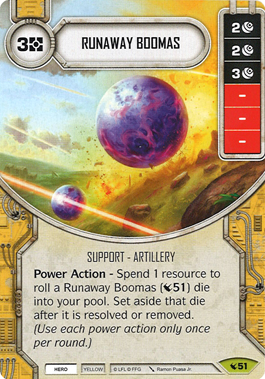
Some cards have the words “Action” or “Power Action” printed on them. You may use one of your actions in a turn to resolve these effects. If a card has an Action, it may be used as many times a round as you like. Power Actions may only be used once in a round. If you happen to have two cards in play with Power Actions, you must take separate actions to resolve their effects. If you have duplicate copies of a card with a Power Action in play, you can use each one once. Otherwise, follow card instructions and you’ll be great.
Action 6: Claim the Battlefield
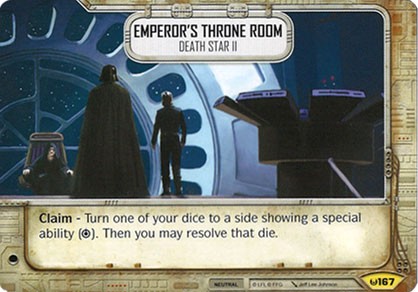
As a round winds down, both players often begin eyeing the battlefield. Only one player many use the “claim the battlefield” action per round, and once they have done so they must pass for every remaining turn in the round. Many battlefields have “claim” abilities that activate when they are… well, claimed. Typically, it is advantageous to be able to claim the battlefield. However, because the player who has used this action cannot use any other actions for the rest of the round, it can also be risky to claim too early.
Players get the advantage of going first in the next round if they have control the battlefield. Using the claim the battlefield action in one round means that you could also be the first player to use the activate a character action in the following round. Understanding how likely your opponent is to re-roll well, what cards they may still have in their hand to play, and how many dice are left in the pool is absolutely critical to making smart use of the claim action.
Pass Action!
Perhaps the most underrated action in Destiny, opting to pass your action (and do nothing) is a potentially powerful strategic move. Passing is an option for you at any point in a round. If you pass, you may still make future actions in the round. However, you are electing not to take an action in the turn in which you pass. Sometimes, passing is better than taking an action. If both players pass consecutively, the round ends and players move to the upkeep phase.
And… Scene!
These are the basic actions you can take in a game of Star Wars: Destiny. The more comfortable you get with taking these actions, the more you will grow as a player. If you are at all familiar with sports, you’ve probably heard coaches tell their players that they need to work on the little things. Taking actions confidently is akin to tackling, catching, and running in a game of football. If you can’t do the little things well, does it matter if you know the game plan or not?
Until next time!
Support The Chance Cube
Do you enjoy the content provided by The Chance Cube? Would you like to connect even further with The Chance Cube Family? Consider supporting this content by joining our Patreon. We are a team dedicated to media coverage and community building, committed to bringing you the best of this game, sharing the joy and community that comes with it. Our Patreons enjoy membership in The Chance Cube Hangout, our Facebook group for supporters of the channel, and we have additional tiers that include gifts from us to you as a thanks for the generous support. Find out more at patreon.com/thechancecube.
